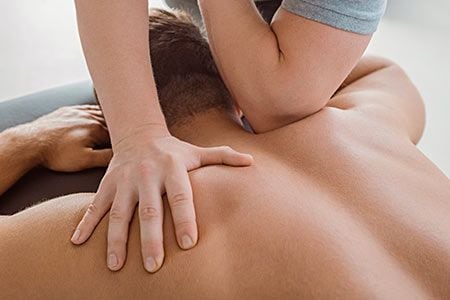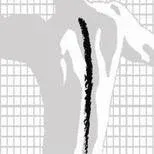
Therapeutic massage, also referred to as medical massage, can be a great addition to chiropractic care. It is common for these therapies to go hand in hand because they are complementary to each other.
There Are Different Types of Therapeutic Massage
Depending on your condition, your sensitivity to touch, and your comfort for lying down or sitting, your chiropractor and massage therapist will determine which type of therapeutic massage is most appropriate for you. There are multiple therapeutic massage techniques, and no single technique fits every body—and massage therapists often have their own specialties when it comes to the techniques they practice. Here are a few of the most common techniques, some of which you may be familiar with:
Swedish Massage
Swedish Massage begins with smooth, gliding light pressure massage strokes, called effleurage, to warm up the tissue. After the tissue is warmed, the therapist applies heavier pressure to the muscles. This is called petrissage. Swedish massage is great for relaxation, but it also improves circulation and flexibility. There is also some evidence that Swedish massage can lower the stress hormone cortisol and boost the immune system.
Lymphatic Drainage
Lymphatic Drainage techniques are great for swelling (edema). This technique uses gentle but firm pressure with movement toward the heart, to manually encourage lymphatic drainage. Lymphatic drainage is also used when there is swelling due to lymph node damage or removal.
Trigger Point Therapy
Trigger points, also known as muscle “knots,” are sensitive areas of bunched up muscle fibers and one of the most common muscle-related complaints. During a trigger point therapy session, the therapist will first identify the problem area(s), and then will apply firm pressure over the points to loosen and disperse the trigger point. You may notice tenderness during a trigger point therapy session.
Chair Massage
Many therapeutic massage techniques can be done in either a lying down or seated position. Chair massage allows for you to be seated during the entire massage in a specially designed therapeutic massage chair. Generally, during a chair massage the therapist will not use any creams or oils, and the patient is often fully clothed.
What to Expect During a Therapeutic Massage Session
A therapeutic massage session in your chiropractor's office may be different from a massage in a spa or therapeutic massage center. Therapeutic massage in the office has a very specific structural and functional purpose, and is focused on specific areas of the body. Your chiropractor and massage therapist will work together, with you, to determine which type(s) of therapeutic massage will benefit you the most and the length of each massage session. Before your first session, your therapist may give you paperwork to get more detailed information about your areas of tension as well as other basic health information. The massage therapist will also ask you about your preferred pressure when massaging you (light, medium, hard). During the massage, it is always suggested to let your therapist know if they can go harder, or if they need to go lighter during your time with them.
A research study from the University of Miami found that children suffering from asthma received considerable benefits from a session of massage as measured by lung function tests and anxiety scores—and many patients benefit from including therapeutic massage in their treatment plans alongside chiropractic care. Because there are a variety of therapeutic massage techniques available, it is important to have your chiropractor and therapist thoroughly assess your areas of concern and determine which types of therapy will improve the physical structure and function of those areas. Please let us know if you would like to learn more about how therapeutic massage may benefit you.
